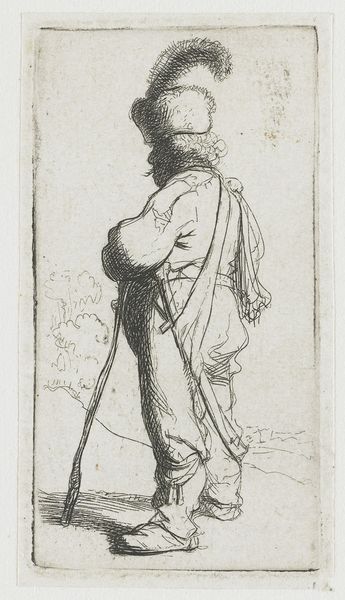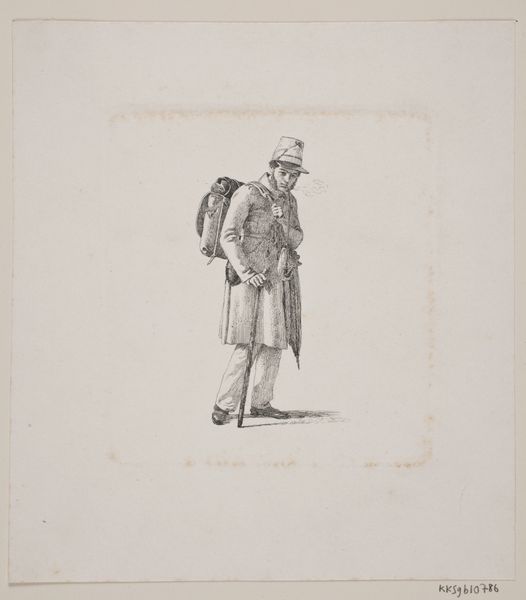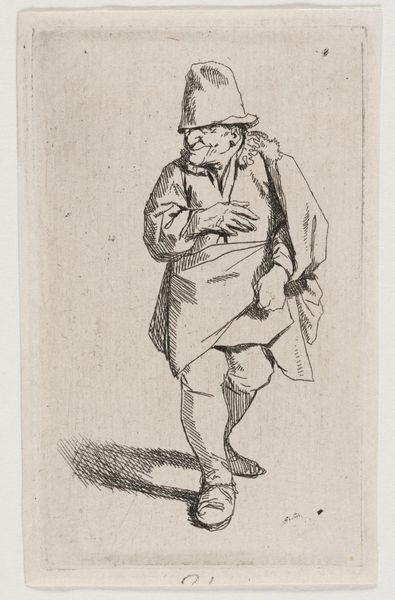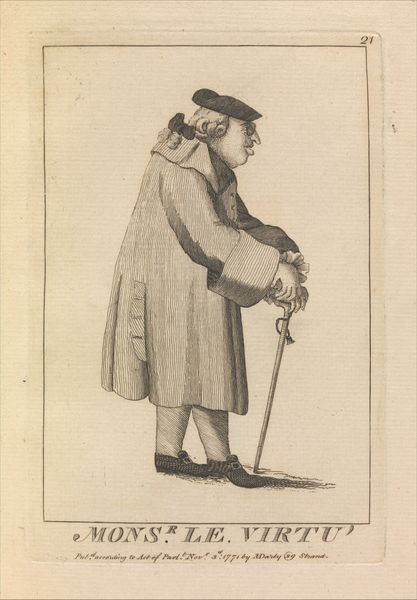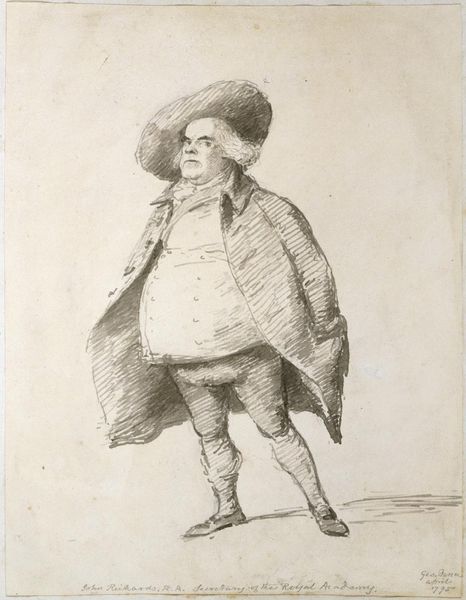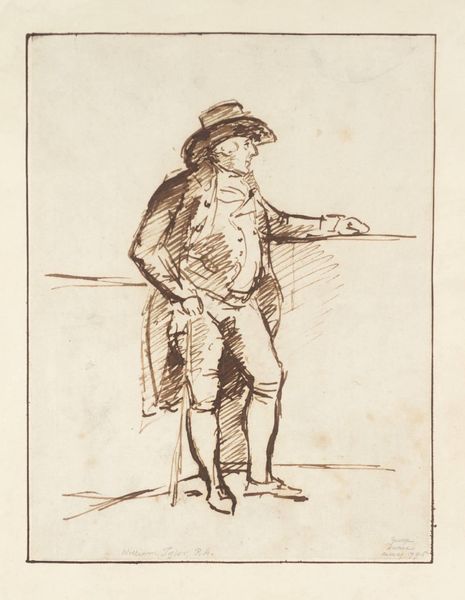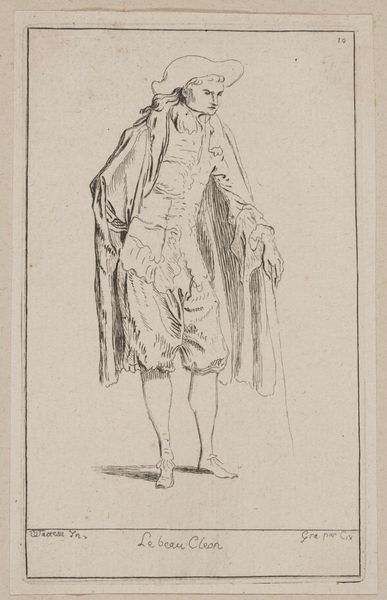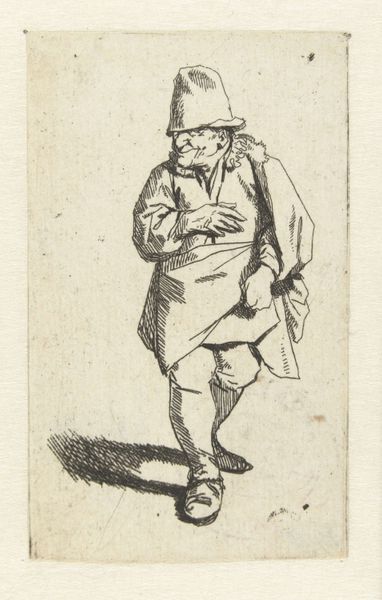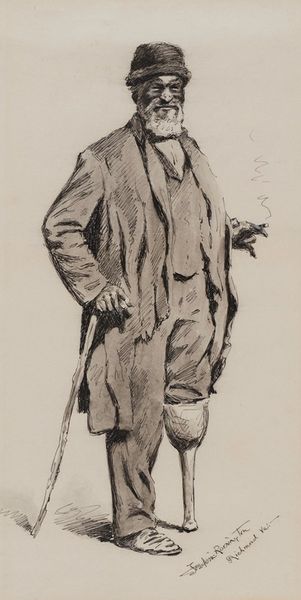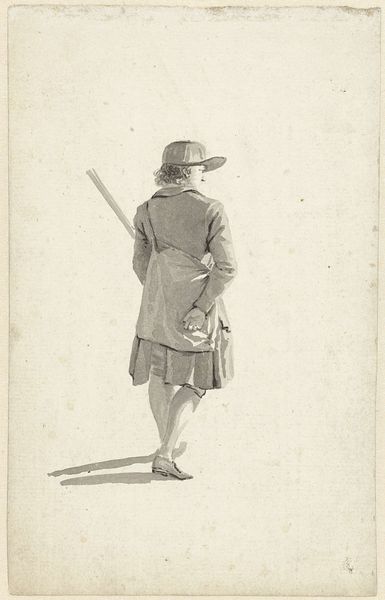
engraving
#
portrait
#
neoclacissism
#
genre-painting
#
academic-art
#
engraving
Dimensions: height 135 mm, width 95 mm
Copyright: Rijks Museum: Open Domain
Editor: Here we have a portrait of the Duke of Brunswick, created in 1784. The anonymous artist worked with engraving. It feels very stiff and formal, especially with his ornate attire contrasting against the stark landscape. What stands out to you? Curator: What immediately strikes me is the power dynamic presented. Notice how the Duke is positioned – standing alone against a rather bland background, complete with military tents and a distant fort. How do you think this imagery played into the Duke’s political ambitions and public image at the time? Editor: I suppose the intent was to convey strength and authority, especially given the military context, but does the rather bland execution undermine that? Curator: That's an interesting point. While the engraving medium might seem understated today, it allowed for mass production. Prints like these circulated widely. In whose hands would you expect to find one? Think about how accessible this image would have been and who the Duke was trying to reach. Editor: Okay, so it was less about artistic flair and more about dissemination. To get this image into as many hands as possible, so he could shape the public's opinion? Curator: Precisely. This speaks volumes about the function of portraiture in the 18th century. It’s less about capturing the true essence of the person and more about crafting a specific political persona. Editor: So, in essence, the simplicity amplifies its power as propaganda? I never would have thought to consider this artwork in this way! Curator: It's through understanding the artwork's function within its specific cultural and political context that its significance emerges.
Comments
No comments
Be the first to comment and join the conversation on the ultimate creative platform.
